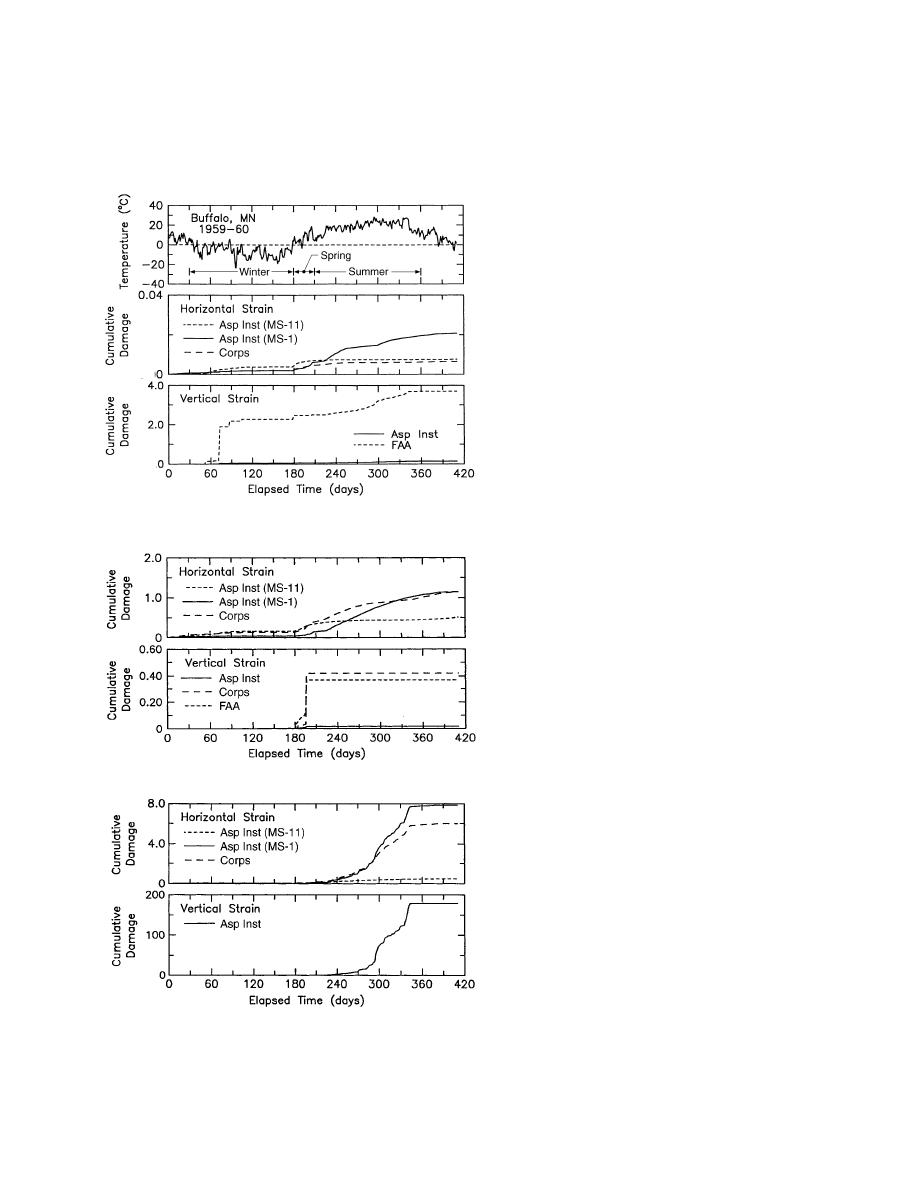
rise during spring thaw period with no accumula-
damage during the spring, with sharper increases
tion at other times of the year (e.g., Fig. 23); 2) a
in the summer (Fig. 24). This last result is likely
series of increases during winter thaw events and
due to the anomalously low asphalt moduli being
the spring thaw (Fig. 22), and 3) in the cases with
predicted by the Schmidt model.
lower modulus subgrades, a gradual increase in
Results--rigid sections
Predicted application to failure for the con-
crete sections is shown in Table 16, with the
three sections in the table indicating the results
of a sensitivity study. In the left-hand section,
the flexural strength of the concrete was set at
4480 kPa (650 lb/in.2) and the surface condi-
tion index (SCI) at the point of failure was set
at 80. In the central section, the flexural strength
was reduced to 3448 kPa (500 lb/in.2), while
the SCI remained at 80. For predictions in the
right-hand columns, the flexural strength was
kept at 4480 kPa (650 lb/in.2 ) and the SCI was
increased to 90. A comparison of the cumula-
tive damage with time for the case represent-
ing section ML5-R-5 with a 1.8-m (6-ft) water
table (r5w6) using all three combinations of
Figure 22. Cumulative damage for case f4w6 with "nor- flexural strength and SCI is also illustrated in
mal" subgrade.
Figure 25. Bigl and Berg (1996b) has a compi-
lation of graphs depicting the frost/thaw pen-
etration and cumulative damage for all rigid
sections simulated.
Cases with a flexural strength of 4480 kPa
exhibited very little damage, with the ML10-
R-11 section having immeasurable damage.
Reducing the flexural strength to 3448 kPa in-
creased the predicted damage for the 5-yr sec-
tions, but had little effect on damage in the 10-
yr section.
The pattern of damage accumulation with
time varied with the test section simulated.
Figure 23. Cumulative damage for case f2w9.
ML5-R-5 experienced rapid increases in dam-
age during the thaw periods, but also had an
equivalent increase in damage over the sum-
mer months. The other sections experienced a
majority of their damage during the thaw peri-
ods and very little damage during the summer.
The low damage predictions result from the
fact that the model predicts damage at the cen-
ter of a slab, whereas the majority of damage
occurs at the slab edges. Chou (1989) recom-
mends increasing the stresses computed from
the layered elastic method by a factor of 1.33
Figure 24. Cumulative damage for case f4w6 with 1232 to estimate the coverage levels for roadway
pavements.
subgrade.
33



 Previous Page
Previous Page
